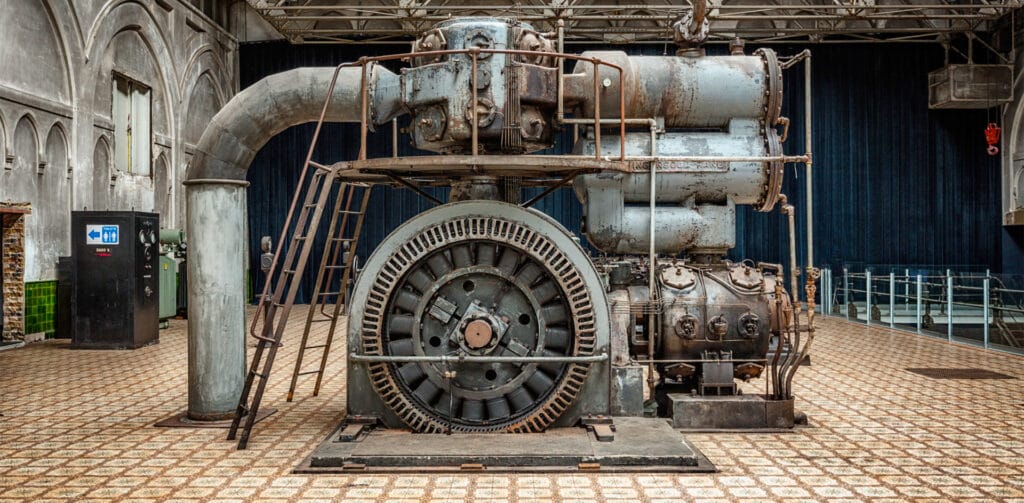
With the rising cost of energy, many households are becoming more aware of the cost of energy consumption and the power consumption of household appliances. While this may seem like a tedious topic, once you are aware of where and how much energy is used inside your home, you can find ways to reduce your energy waste and reduce your monthly bills. So, here we’ll explore this topic in more detail.
Whether you’re interested in reducing your overall energy consumption or want to find one the best portable generators for your home, you’ll need to know the typical power consumption of everyday household appliances. While every appliance is different, there are some typical consumption rates that can provide you with an idea of where the bulk of your energy usage is in your home.
| Appliance | Energy use per hour (kWh per hr) |
| Electric Portable Heater (1500 watt) | 1.5 |
| Baseboard heater (6 ft unit) | 10 |
| Electric Furnace with fan | 10.5 |
| Window Wall AC Unit 240v | 1.8 |
| Central AC Unit 12 SEER | 3.0 |
| Pedestal Fan | 0.03 |
| Ceiling Fan | 0.025 to 0.075 depending on size and speed |
| Appliance | Energy Use per Month (kWh) |
| Electric water heater | 380 to 500 |
| Instantaneous 70ºf at 1 gpm | 380 to 500 |
| Heat pump 50 to 75 gallon plus | 77 to 111 |
| Appliance | Energy Use |
| Oven | 2.3 kWh per hour |
| Self Cleaning Oven Feature | 6 kWh per hour |
| Microwave | 0.12 kWh per 5 minutes |
| Single Serve Coffee Maker | 0.26 kWh per cup |
| Coffee Maker | 0.12 kWh per cup |
| Dishwasher Energy Saver Cycle | 0.5 kWh per load |
| Dishwasher Normal Cycle | 1 to 2.17 kWh per load |
| Toaster Oven | 0.75 kWh per hour |
| 2 Slice Toaster | 0.4 kWh per use |
| 15 cu.ft frost free refrigerator | 150 kWh per month |
| 15 cu-ft manual defrost freezer | 90 kWh per month |
| 14 cu-ft Energy Star refrigerator | 34.5 kWh per month |
| 25 cu ft Energy Star side by side refrigerator | 60 kWh per month |
| Device | Energy Use |
| 40” to 50” LED | 0.071 kWh per hour |
| 60” plus LED | 0.12 to 0.18 kWh per hour |
Obviously, these are figures for the average power consumption of household appliances. These typical values can provide you with some insight into where the bulk of your energy consumption is occurring, but if you want to have a clearer idea, you will need to look at your specific appliances.
If your kitchen is filled with older appliances that are not particularly efficient, your energy bill is likely to be far higher compared to someone who has a similar sized kitchen, but with Energy Star appliances.
As we’ve highlighted in the tables above, Energy Star or energy efficient appliances and devices can show a significant difference in consumption rates compared to their less efficient counterparts.
It can also influence what size of generator you’ll need. If you have inefficient appliances, you’re likely to have to look at generators with a larger capacity. Here is our list of the best 10,000 watt generators that are worth checking out. However, if you have modest power requirements, you may prefer the greener approach with our list of the best solar generators.
While many people may be interested in the power consumption of household appliances to save energy, it is also crucial if you want to purchase a generator. A generator can be a great tool if you want to prepare for an emergency. Whether you’re planning on having work done on your home and may have inconsistent power or you have concerns that your area may be impacted by blackouts due to weather related issues. However, you can’t simply buy any generator, as you need one that can handle the load of your home appliances and essential electronics.
Fortunately, it is quite simple to calculate what appliances you’ll be able to run with a generator by working out your wattage requirements. The first thing you’ll need to do is list all the appliances that you’ll need to keep running in the event of a power outage. For example, in an emergency, you are not likely to need every computer in your home, but you will need to keep your heat and protect your food from spoiling.
You will need to look at the required running and starting wattage for each of your essential appliances. You can find this information on the product tags, owner’s manual or manufacturer’s website. Write a list that includes both the appliance and the wattage requirements.
Now you need to add up all the starting wattages and running wattages that are needed to operate your essential appliances. These totals will provide you with your generator wattage requirements.
If some of your electric appliances inside your home do not have a data tag showing the running wattage, you will need to estimate the requirements with the formulas:
This means that provided that you have the volts and amp requirements for your appliance, you should be able to convert them easily into an estimate of the running wattage requirements.
If this seems a little complicated or time consuming, you could consider using an appliance load tester. This useful tool helps you to determine the wattage requirements for each of your appliances. This means that you don’t need to do any complicated math, as you can simply use the tester for each individual appliance or power tool to see your precise wattage needs.
If you require more detailed information on your energy usage, you could consider a whole house energy monitoring system. These systems do vary in complexity and cost, according to how many circuits that you want to monitor, the features and the level of data detail. You can install these monitors directly into the main breaker panel in your home, but you may need an electrician to complete the installation. However, there are some models that can be hooked into your wireless network and you can view your home’s data on your smartphone or computer. This can help you to understand when and where you use the most energy so you can develop strategies to reduce your energy costs or choose an appropriate generator.
In addition to looking at the various fuel options, one of the most important decisions when you’re shopping for a new generator is the size. You’ll need to know your wattage requirements, which will ultimately decide whether you will need a small, medium, or large generator model.
Generally speaking, medium generators offer up to 5,000 watts, while large generators offer up to 9,000 watts or more.
Once you have a figure of your household wattage requirements, you can start to look at generator sizing. Many people get a little confused about this as there is a figure for starting watts and running watts. The reason for this is that most appliances have a surge of electricity to get started which is higher than the usage when the appliance is just ticking along. So, you’ll need to check the generator has sufficient starting and running wattage. For example, the Champion Power Equipment 100416 is marketed as an 8,000 watt generator, but this refers to the running wattage, it actually offers 10,000 starting watts. Just be sure to check the wattage for particular fuels if a model is dual fuel.
A better example of this is the DuroMax Duro Star DS12000EH, which is a dual fuel generator. If you’re using it with gasoline, the running wattage is 9,500 with a starting wattage or 12,000. However, if you use propane, the wattage is lower at 9,025 and 11,400.
So, be sure to check the full specifications of any generator model to ensure that it fully meets your household requirements before you make a purchase decision.
Whether you are looking to purchase a new generator for emergency situations or home improvements or you want to take some active steps to reduce your energy usage and utility bills, you need to understand the power consumption of household appliances. An awareness of where and when energy is used the most inside your home will allow you to focus your efforts to reduce your usage.
If you have concerns about the rising cost of your energy bills, knowing the areas of the home that use the most energy can allow you to develop strategies as a family to lower your expenses. However, knowing your average power consumption of household appliances can help you to see if you could be doing more to live a greener life.





